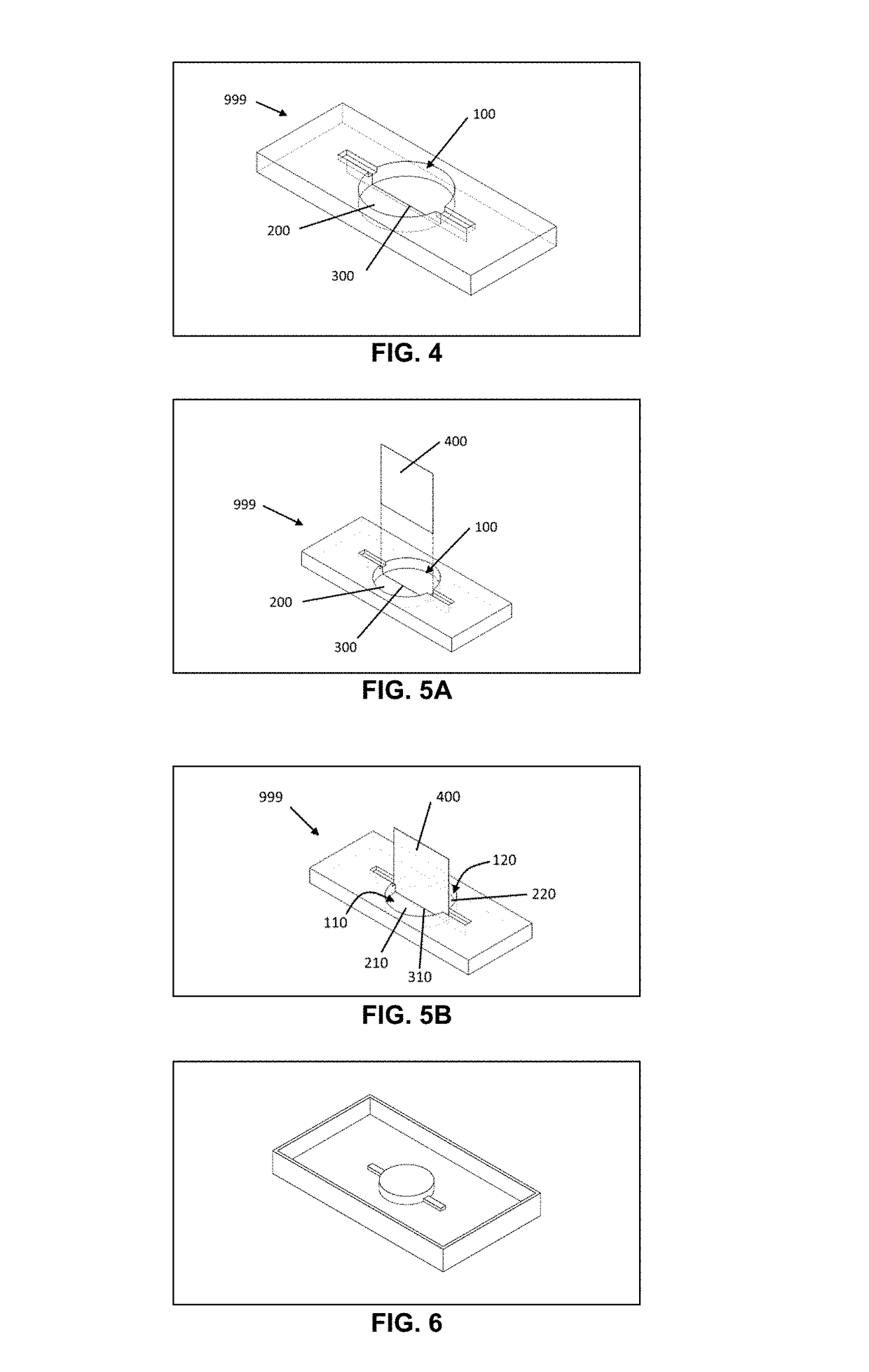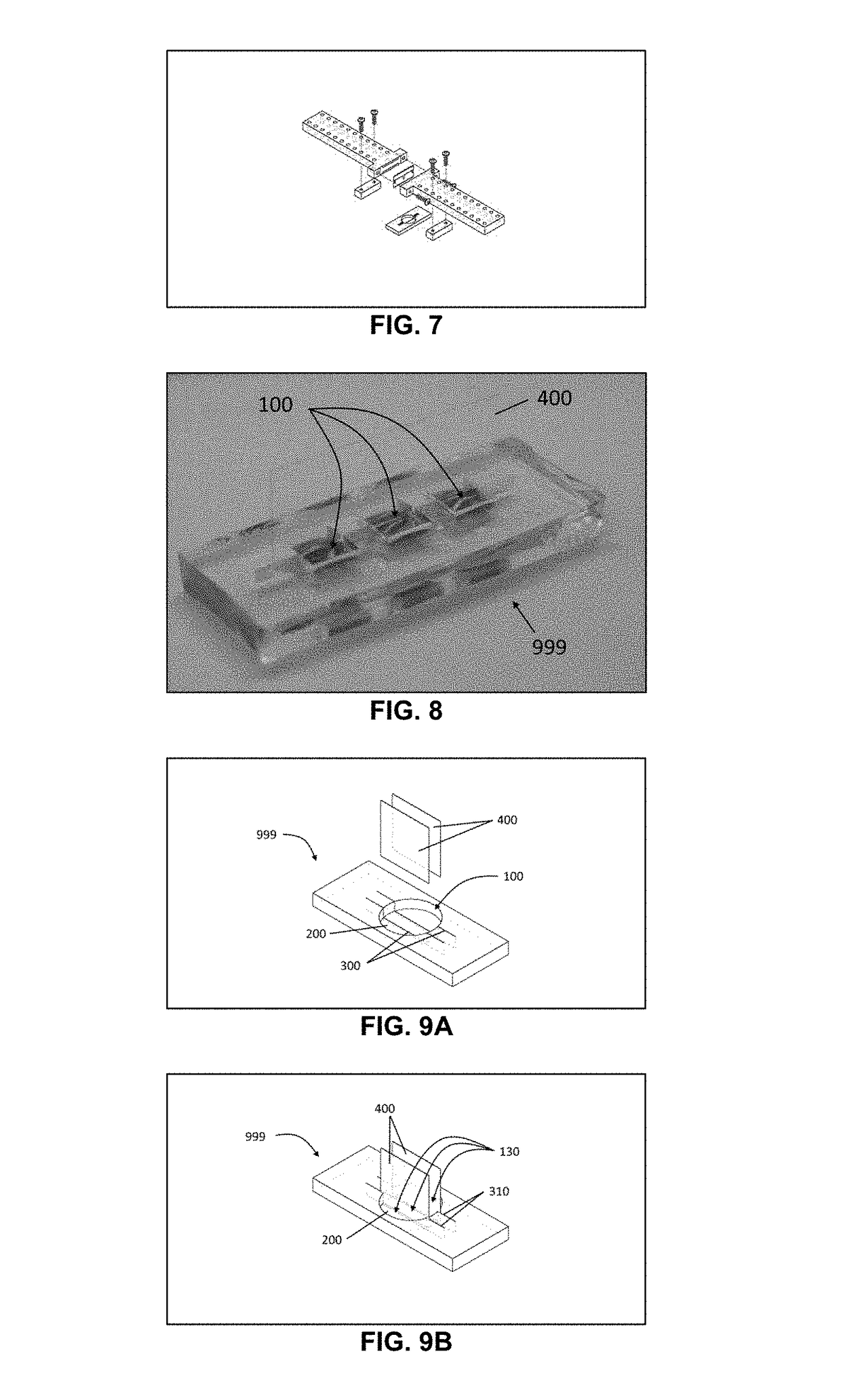Method and device for patterning an interface
a patterning and interface technology, applied in the field of patterning interfaces, can solve the problems of dragging interfaces, low patterning accuracy, and difficult access to high-quality patterning tools by users with conventional cell biology training, and achieves less cell-cell contact, sharp interfaces, and less cross-contamination.
- Summary
- Abstract
- Description
- Claims
- Application Information
AI Technical Summary
Benefits of technology
Problems solved by technology
Method used
Image
Examples
Embodiment Construction
[0034]Following is a list of elements corresponding to a particular element referred to herein:
[0035]999 coating interfacing device
[0036]100 well
[0037]110 well first compartment
[0038]120 well second compartment
[0039]130 well compartments
[0040]200 elastomeric bottom surface
[0041]210 first elastomeric bottom surface
[0042]220 second elastomeric bottom surface
[0043]300 slit
[0044]310 gap
[0045]400 divider
[0046]500 spacer
[0047]510 aperture
[0048]The term “coating” as used herein broadly refers to items including but not limited to macrostructures, microstructures, molecules, cells, proteins, chemicals, paints, acids, bases, etchants, cross-linkers, or any component that is observed along with and used in accordance with this present invention. For example, a designated coating on a surface may be a layering of a specific type of cells on that surface. Different surfaces, e.g. different elastomeric bottom surfaces, may have different or same designated coatings. For example, a first elastome...
PUM
| Property | Measurement | Unit |
|---|---|---|
| time | aaaaa | aaaaa |
| depth | aaaaa | aaaaa |
| thickness | aaaaa | aaaaa |
Abstract
Description
Claims
Application Information
 Login to view more
Login to view more - R&D Engineer
- R&D Manager
- IP Professional
- Industry Leading Data Capabilities
- Powerful AI technology
- Patent DNA Extraction
Browse by: Latest US Patents, China's latest patents, Technical Efficacy Thesaurus, Application Domain, Technology Topic.
© 2024 PatSnap. All rights reserved.Legal|Privacy policy|Modern Slavery Act Transparency Statement|Sitemap



